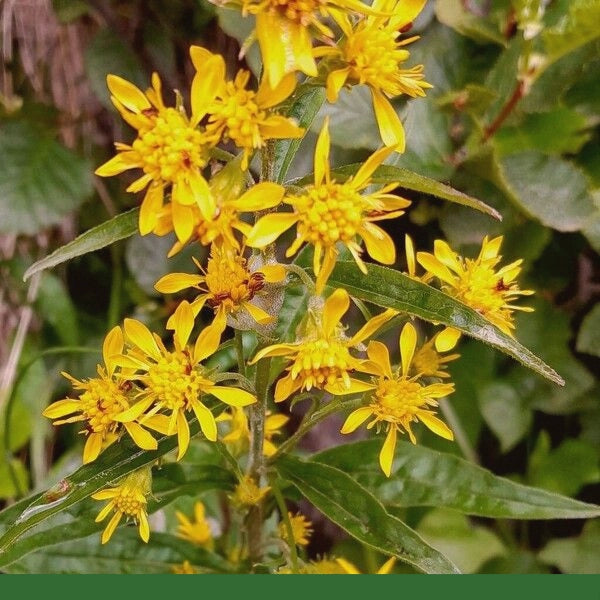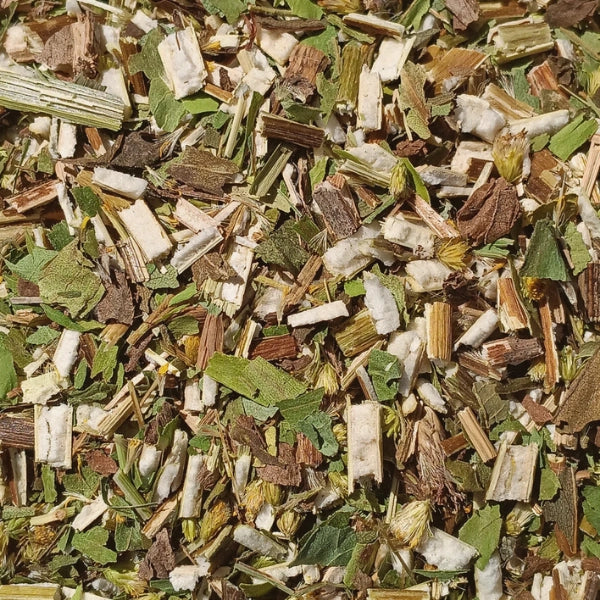Goldenrod (Solidago virgaurea) - Dried Herb, Organic
- Regular price
- $10.69
- Sale price
- $10.69
- Regular price
-
- Unit price
- per
Couldn't load pickup availability


Goldenrod is herbaceous perennial that blossoms in late summer to early autumn with flat-topped clusters of golden yellow plumes, growing up to around 60cm (24 inches) tall. Also know by the names Canada Goldenrod, Golden Baby, Goldkind and Yellow Springs. The botanical name Solidago comes from the Latin term "solidare," which means "to make whole".
The species Solidago canadensis is native to north eastern and north central North America and is from a genus of about 100 to 120 species of flowering plants in the aster family, Asteraceae or Sunflower family. Most of which are herbaceous perennial species found in open areas such as meadows, prairies and savannas. In some areas Goldenrod is an invasive plant in other parts of the continent where it is not from and several areas worldwide, including Europe and Asia. The flowers are an important nectar source for bees and butterflies and other nectar feeders.
The plants provide plenty of cut flowers and are beautiful in bouquets because they dry well and hold their colour. Historically Goldenrod was wrongfully accused of causing hay fever, which is an allergic reaction to wind-borne pollen. The truth is that the pollen of Solidago is not an allergen, it is too heavy to be carried by air currents and must move from plant to plant by insects. The pollen from Ragweed (Ambrosia artemesiifolia), flowers at the same time and is believed to be the pollen source that causes hay fever. In the Americas, after the Boston Tea Party, which was significant in the revolution, colonists dumped all of their favourite Green and Black Tea and then made a tea of Goldenrod and called it "Liberty Tea". Colonists used the young flowers as a light-fast primrose yellow on wool.
Historically, Goldenrod was typically applied to the skin to help heal wounds, prevent infections and as a diuretic tea to helps the body get rid of excess fluid and to support the upper respiratory system. Native Americans chewed on the leaves to relieve sore throats or toothaches and most was used to by the Nlaka'pmx and Okanagan peoples as a tea to help with diarrhea.
Properties:
The taste and energetics of Goldenrod are bitter, pungent, aromatic, warming and drying. Goldenrod has an affinity to the respiratory system, kidneys, urinary tract, skin, digestive system, musculoskeletal system, gums and teeth. As a support for the upper respiratory system and possible allergies combine Goldenrod with Plantain Leaf, Elderflower or Nettle Leaf. For kidney support and cleansing combine with Corn Silk, Marshmallow Root, Chicory Root or Hydrangea Root.
How to use:
1 teaspoon of Goldenrod to one cup of boiling water. Steep for 15 minutes, strain and drink up to three cups a day.
Or make a tea and use topically on skin.
Cautions & contraindications:
High water intake is recommended with Goldenrod because of its diuretic effect. Patients with impaired kidney or liver should be carefully monitored. Caution in people with allergies to Asteraceae family.
This information is for educational purposes only and is not intended to diagnose, treat or cure any disease or illness. Please consult your healthcare provider prior to the use of this product if you are pregnant, nursing, taking medications or have a medical condition. Individual results may vary.

